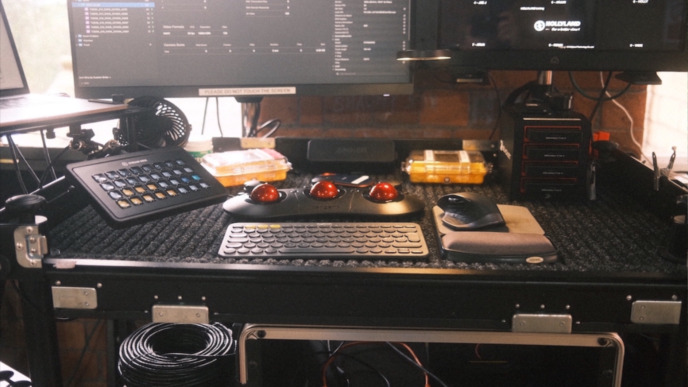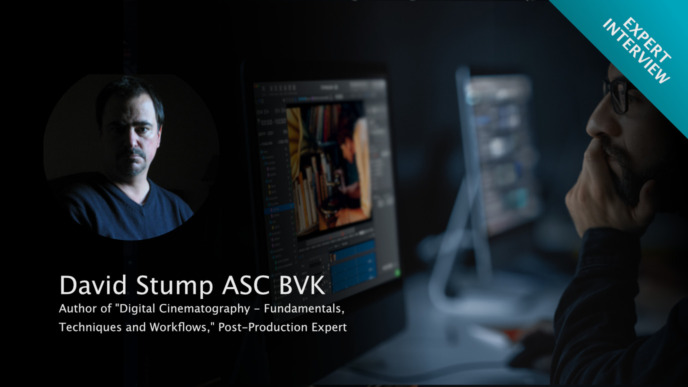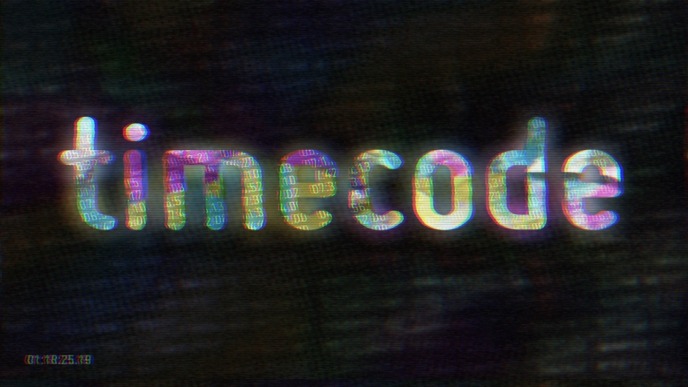
Update 07. March 2024: Noted that SDI Metadata is not supported with UHD signals.
You might come across this article’s headline and be surprised: “4K has been around for so long. Hasn’t 4K already become a production standard by now?“ Astonishingly, it hasn’t! In fact, most productions still work with HD setups on set. Although in the meanwhile, the guidelines of many shows require not only HDR for on-set monitoring but also 4K. Well, time to consider how to get 4K off the ground successfully.
In this article, you will learn more about the current status of 4K and the obstacles to be cleared. Discover the compatibility of the Livegrade product family with 6G and 12G-SDI and how to benefit from 4K. Finally, with a practical orientation, we gathered already well-working 6G-SDI setups with Livegrade in the last section.
Note: Capturing SDI metadata is currently not supported with UHD signals.
Why SDI?
To properly do their job on set, DITs depend on receiving reliable, high-quality signals from the cameras on their carts. Therefore, SDI signals are still the “gold standard,” ensuring the transmission of a very reliable and uncompressed video signal in at least 4:2:2 10-bit – even when running SDI cables over very long distances.
Since its introduction by the Society of Motion Picture and Television Engineers (SMPTE) in 1989, the Serial Digital Interface (SDI) family has continued to evolve. Find an overview of SDI standards from 1998 to today (skipping the early SD-SDI formats from 1989) in the table below. [1]

Although the 6G and 12G SDI standards enabling 4K have been available since 2015, many productions still work in HD (via 3G or HD-SDI). In the next section, let’s look at the underlying reasons and why it’s worth focusing on 4K.
Note: In this article, we use “4K” synonymously for 4K DCI (= 4096×2160) and UHD (= 3840×2160). 6G and 12G-SDI support both video formats.
Where Are We at with 4K?
As mentioned before, 4K hasn’t been widely adopted yet. When looking at potential reasons, two things stand out: First, most productions use screen diagonals lower than 27 inches. With little viewing distance to the monitor, you’ll only note tiny differences between HD and 4K images – if any. And second, maintaining color fidelity for an excellent grading experience from set to post is one of the significant efforts of the DIT’s work. Therefore, lossless processing quality in at least 4:2:2, 10 bit is often considered more important than resolution.
However, the 6G and 12G-SDI standards still allow for uncompressed 4:2:2 10-bit quality plus the higher 4K resolution. And there are many good reasons why you should still consider using 6G-SDI and benefit from 4K on-set preview and live grading:
- Preview all your images in the resolution of the final product!
- Get the best out of your devices! If you’re working on an HDR show, you will probably use one of the latest top-end SDI monitors that usually also support 4K. Why not use all its capabilities?
- Ensure a more reliable live QC! The higher resolution enables a better judgment of focus and details. For example, spot dead pixels that might not be visible at smaller resolutions.
With those benefits in mind, you might ask yourself why we’re not switching everything to 4K asap. Well, unfortunately, it isn’t that simple as hardware and peripherals still create thwarting bottlenecks. Let’s look at some challenges:
- Every single element of the SDI chain has to support 6G or 12G SDI, and the available selection is limited. New devices with the respective capabilities usually entail high acquisition costs. For all example setups in the next section, you’ll need a 6G/12G-SDI capable monitor, and your camera needs a 6G/12G-SDI video output. And, of course, any other device you add to the setup needs to support 6G/12G-SDI as well. That’s quite a bit of financial commitment!
- Also, consider the correlation between quality and the maximum length of the SDI cable for smooth signal transmission. Higher data rates may reduce the maximum length of the cable or require upgrading to a higher cable quality.
- Last but not least, your software applications must be compatible with the latest SDKs introduced by the hardware manufacturers and the according specifications.
All these factors have to be considered, as a single missing element could jeopardize all your plans for a 4K setup. Nevertheless, a lot is already possible if you look into upgrading your setup to 6G or 12G-SDI now or in the nearer future. Below we compiled some examples for current 4K-compatible setups with Livegrade.
4K Setups That Actually Work (Already)
Livegrade continuously adds support for more 6G and 12G-SDI capable devices. For example, the recent integration with AJA’s ColorBox allows interactive grading of 6G and 12G-SDI signals and receiving 4K frame grabs at high update intervals. Before we head over to different setup examples, it’s important to quickly mention the following side notes:
As you might have noticed, in the table above, 6G and 12G-SDI standards were introduced simultaneously in 2015. While 6G supports 4K-SDI signals up to 30 fps, 12G can even transmit 4K-SDI signals up to 60 fps. Since film sets very rarely work with frame rates above 30 frames per second, 12G requirements will only be relevant in exceptional cases. Therefore, we will focus on the support of 6G-SDI setups in this article.
Can you live with workarounds? SDI transmission can usually be scaled to the next higher standard with dual and quad cabling. For example, did you know you can use an FSI BoxIO to grade a 6G signal? By connecting two 3G channels, you’ll get one 6G channel:
- Configure BoxIO in IPRU: Set up the device into a dual-channel mode
- Add device in Livegrade:
- Disable framegrab and scope stream (those are not supported in this case)
- Add both channels to the same slot
- You can now grade one 6G-SDI video signal
In most cases, however, the camera crew tries to get by without bulky dual and quad cabling on a film set. For multi-cam shoots at the latest, cabling gets way too complex. And in addition, many devices are severely limited in their number of maximum connections.
Therefore, in this article, we focus on setups that work with single-link 6G or 12G-SDI connections. So without further ado, let’s get into it!
6G-SDI Setup Examples
a) 4K Basic Setup With LUT Box
What you need:
- Camera with 6G-SDI output
- AJA ColorBox
- 4K Monitor with 6G-SDI input
What you get:
- interactive grading of one 4K (6G-SDI or 12G-SDI) signal,
- 4K framegrabs with ANC metadata at 1fps (actual interval depends on network speed and robustness),
- live monitoring at 4K resolution

b) 4K Setups With Movie Recording
What you need:
- Camera with 6G-SDI output
- AJA ColorBox or AJA FS-HDR* (no framegrab) or IS-mini 4K (no framegrab)
- AJA Kona 5 or Blackmagic video I/O device supporting 6G / 12G-SDI (e.g. Blackmagic UltraStudio 4K Extreme 3)
- 4K Monitor with 6G-SDI input
* Requires dual 3G to 6G adapter or additional SFP module
What you get:
- interactive grading of one 4K (6G-SDI or 12G-SDI) signal,
- in-application preview in Livegrade, ANC metadata, 4K movie recordings and
- live monitoring and playback from library at 4K resolution
Note: You can get the SDI connection to the capture device from a second SDI camera connector or the clean loop-through connection of your LUT box.

c) 4K Setups With Direct Monitor Integration
What you need:
- Camera with 6G-SDI output
- 4K Monitor with 6G-SDI input and native Livegrade integration:
- the latest 4K Professional Displays series by Canon, e.g., Canon DP-V1830, Canon DP-V2411
- the latest XM-series by Flanders Scientific, e.g., FSI XM312U, FSI XM552U,
- or the 4K Production Monitors series by SmallHD, e.g., SmallHD Cine 18″ 4K High-Bright Monitor, SmallHD OLED 22” 4K Reference Monitor
What you get:
- interactive grading of at least one 4K (6G-SDI or 12G-SDI) signal (or more depending on inputs on monitor) and
- live monitoring at 4K resolution
Optional: Add a 6G/12G-SDI compatible video I/O device for in-application preview, ANC metadata, 4K movie recordings and playback from library

d) 4K Setups With Direct Camera Integrations
What you need:
- Camera with 6G-SDI output and interactive grading integration with Livegrade, e.g. ARRI ALEXA 35 or Sony VENICE 2
- 4K Monitor with 6G-SDI
What you get:
- interactive grading of your camera’s 4K (6G-SDI or 12G-SDI) signal and
- live monitoring at 4K resolution
Optional: Add a 6G/12G-SDI compatible video I/O device for in-application preview, ANC metadata, 4K movie recordings and playback from library

Anything Else? Maximum Cable Lengths!
Will you get less transmission range when using a higher bitrate SDI standard? As it turns out, the answer is not that simple:
According to the SDI specification, the coaxial cable may have an attenuation of up to 20dB for HD-SDI at 742.5 MHz, for example. Accordingly, attenuation values are also specified for the other formats in the SMPTE standards. With this info, it is possible to determine which ranges are possible with the different cable types.
For flawless high-frequency transmission, the quality of cables plays a crucial role. High-quality isolation material and optimized connector pins are required.
The table [2, 3, 4] below shows the maximum lengths for different cable types: From basic cables (with smaller center wire diameters) to special low-attenuation cables (with double shielding and larger center wire diameters). The values are compiled from the technical specifications of various cable manufacturers (see source below) and have been averaged and rounded.

Looking at these specs, it feels surprising that you should be able to achieve similar transmission distances for 6G-SDI compared to HD-SDI when using appropriate cable quality. An explanation is provided by the newer SMPTE standards, which allow higher frequencies and, at the same time, a higher maximum attenuation. For example, the maximum attenuation of 6G-SDI is specified for up to 40db at 3000 MHz (1/2 the clock frequency of 6 GHz). Consequently, you can achieve reasonable transmission ranges despite the higher data rate.
In practice, these distances may vary significantly depending on the equipment used and the overall conditions on set such as:
- Age and condition of the cable
- Bending radius
- Connector quality
- Electromagnetic interference
- Specification of the chips sending and receiving the signal
Conclusion
In this article, we reviewed the current state of 4K with Livegrade and suggested some real-world 6G-SDI setups. Of course, everyone has to decide whether it’s worth the effort, but it’s obvious that more and more productions are expecting 4K on set these days. Offering many flexible ways to realize 4K live preview and 4K grading, the Livegrade product family is an excellent companion throughout your personal 4K journey.
REFERENCES:
[1] Wikipedia, Serial digital interface, accessed 13 October 2022, online resource (available here).
[2] Belden (2021), Estimated Transmission Distance at Serial Data Rates, online resource (available here).
[3] Canford, Maximum transmission distances for digital video cables, accessed 13 October 2022, online resource (available here).
[4] Sommer Cable, Technical Info – Transmission Lengths Video Cables, accessed 13 October 2022, online resource (available here).



